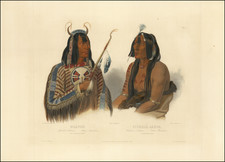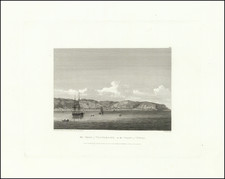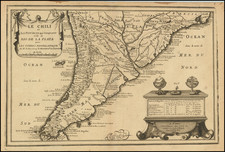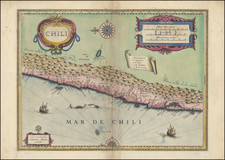Eberhard Werner Happel's Die Einwohner in Magellanica is an interesting woodcut from 1688, depicting an intimate scene of indigenous inhabitants in the Straits of Magellan. This artifact carries a narrative that presents a vivid tableau of the time, illuminating the encounter of the Europeans with the native inhabitants of South America.
Happel, a German author, and polymath, offers an intriguing window into the early encounters between Europeans and indigenous peoples. His text, accompanied by the woodcut illustration, provides an account of voyages across the Atlantic, exploring the Strait of Magellan and further into the South Sea. These voyages, characterized by intricate navigational routes and challenging weather conditions, shaped much of the early mapping and understanding of these then-remote territories.
Historically, the Strait of Magellan was a critical passageway for ships sailing between the Atlantic and Pacific Oceans before the Panama Canal was built. In the late 16th century, explorers such as Elias Herckman and Peter Sarmiento, as mentioned in Happel's account, played a significant role in charting these waterways. Their voyages not only broadened geographic knowledge but also fostered encounters with diverse cultures, as evinced in the illustrations of indigenous Magellan inhabitants.
Happel's work, Die Einwohner in Magellanica, is thus a distinctive piece of visual and written history. It allows the viewer to delve into the exploratory missions of the late 16th and early 17th centuries while providing a candid glimpse into the lives of indigenous people during this epoch of European exploration. Furthermore, its artistic quality complements its historical significance, making it a unique object of study in the fields of both art history and early modern European exploration. The depicted intimate familial scene among the Magellanica, in contrast to the typically grand narrative of exploration, adds a human dimension that enhances our understanding of this period in history.
Eberhard Werner Happel (1647–1690) was a German author of scientific and historical works. The son of a reformist Lutheran minister, he studied law, mathematics, and natural sciences in Marburg, Germany, from the 1660s to 1680s, though due to financial issues he never finished his formal education. He also tutored aristocratic families in Hessen and Hamburg during this time. Around 1680 he devoted himself to writing, publishing several works of historical fiction. He also published several historical and scientific almanacs, the most famous of which was Historia Moderna Europae, which covered recent European political history and included detailed maps and engravings. His most famous scientific work was Gröste Denkwürdigkeiten der Welt: Oder, So genannte “relationes curiosae”, which contained one of the most important early discussions of oceanographic phenomena. In later years Happel continued to be a successful and widely read author. He died in Hamburg at age 42, survived by his wife, Margarita, and four children.













![Dacota-Krieger. Guerrier Dacota [Dakota Warrior, Wahk-Tä-Ge-Li, or Big Soldier]](https://storage.googleapis.com/raremaps/img/small/81195.jpg)
![[Martin Garcia Island, Argentina] Ilha De Martin Garzia](https://storage.googleapis.com/raremaps/img/small/59597.jpg)